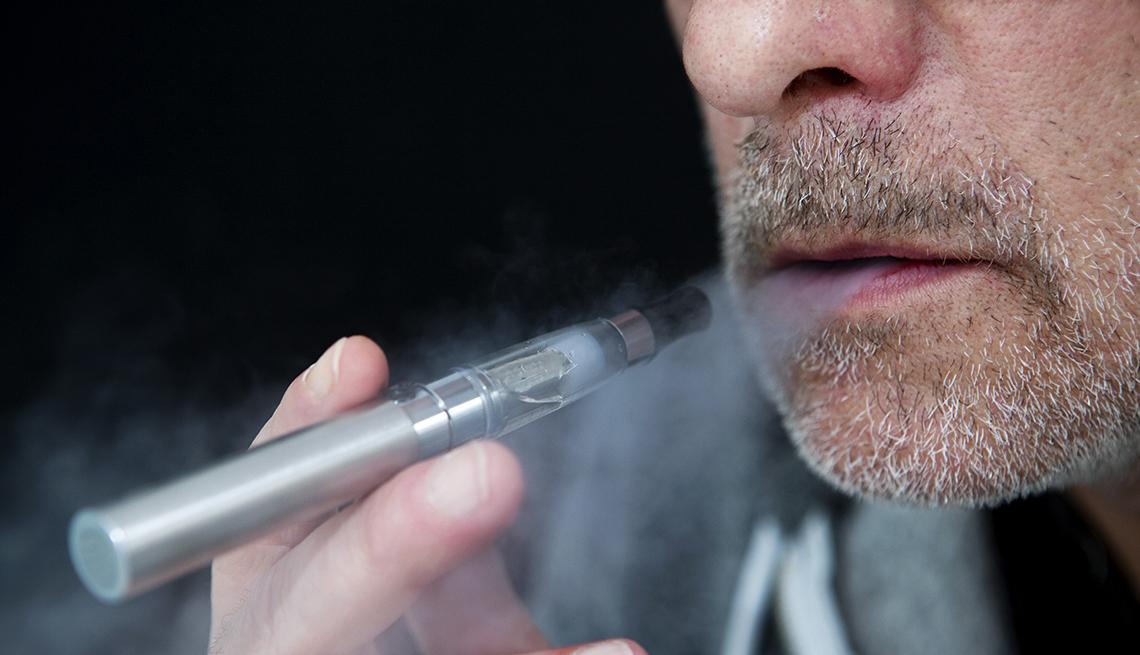AARP Hearing Center
If you're over 50 and vaping, it's officially high time to switch off that e-cigarette. All those scary headline-grabbing warnings about vaping-related illnesses apply to you, too. “Everyone, including older adults, should refrain from using all e-cigarettes and vape products,” says Brian King, deputy director for research translation of the Office on Smoking and Health at the Centers for Disease Control and Prevention (CDC).
Reports of severe breathing problems and deaths related to vaping began to surface in late summer and have now soared to 1,299 confirmed cases of vaping-related illness. There have been 33 confirmed deaths as of Oct. 17 — roughly half of them in people over age 50, according to the CDC. Most vaping patients were under 35 but a new CDC report shows adults older than 50 are getting hit hard: Among 342 people with vaping illness, 69 percent of those over age 50 were admitted to hospital intensive-care units compared with 38 to 56 percent of younger adults and teens; older adults were more likely to need breathing tubes and spent nearly 15 days in the hospital, compared with six to seven days for younger people.
“Anyone who vapes puts their lungs at risk,” says pathologist Maxwell Smith, coauthor of a recent Mayo Clinic study of lung damage. Numbers are higher in young people simply because so many of them vape, King notes. But the high percentage of deaths among older users suggest that they may be at greater risk for the most serious effects of vaping.
As the federal government and medical organizations urge consumers not to vape, some states are also limiting sales. A four-month emergency ban on all vaping products is underway in Massachusetts (through Jan. 25), and New York state is battling a legal challenge to its proposed ban on flavored vape products. Kroger, Walgreens and Walmart said they would halt e-cigarette sales, too.
If you're among the estimated 3 to 7 percent of adults ages 50 to 64 who vape nicotine or the 1 in 4 medical marijuana users age 50-plus who vape their cannabis, here's what you should know:
How does vaping work, anyway?
E-cigarettes and vape pens heat up liquid nicotine or the cannabis compounds tetrahydrocannabinol (THC) and/or cannabidiol (CBD). This produces an aerosol that users inhale. Nicotine vape products also contain flavorings, propylene glycol and glycerol. It's not always possible to tell what's in THC vaping products, however, even in a state-regulated marijuana dispensary.



































































